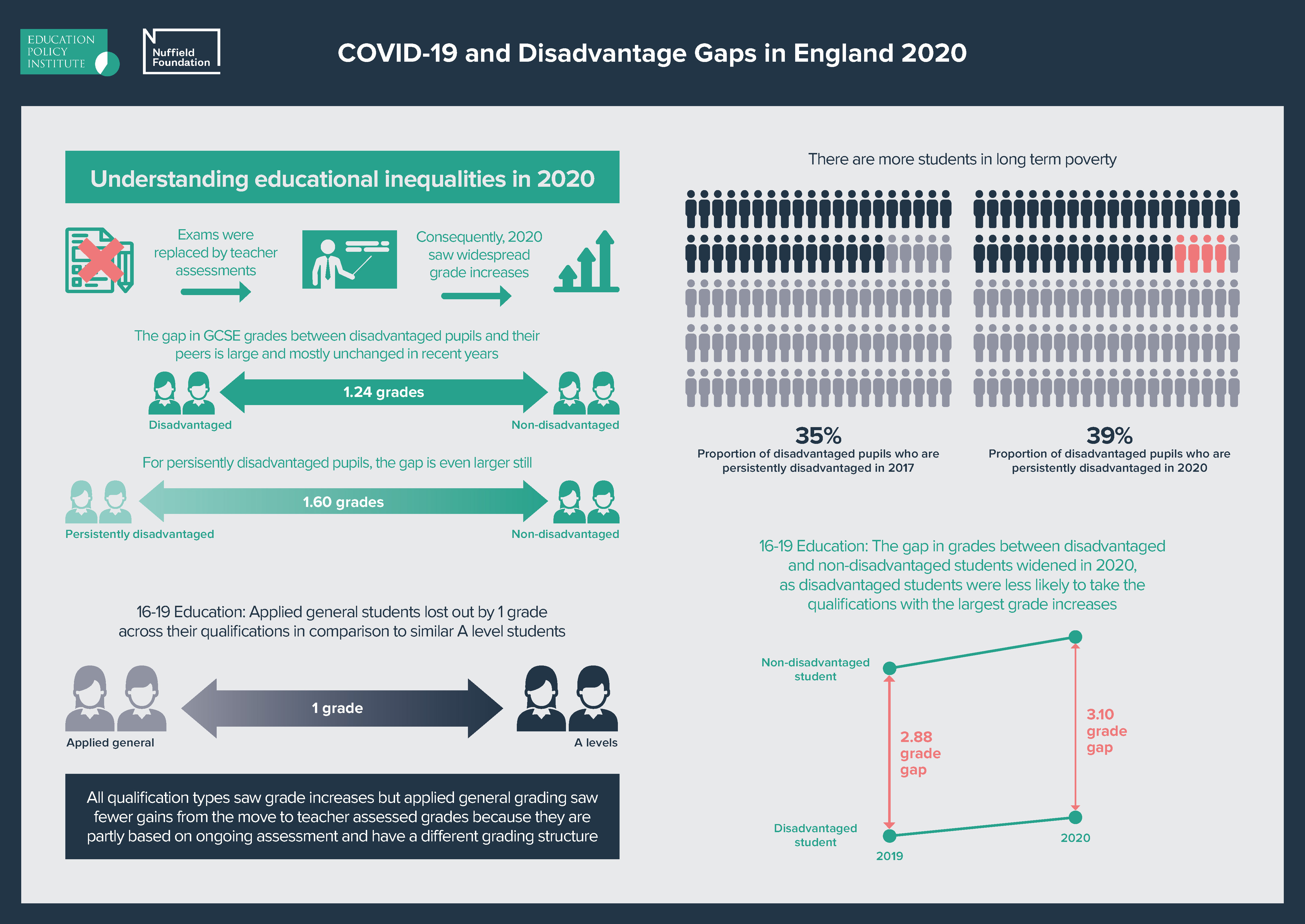The Education Policy Institute (EPI) has published a major report, funded by the Nuffield Foundation, on the disadvantage gap in education.
“The disadvantage gap” – the gap in grades between disadvantaged students and their peers – is a leading measure of social mobility in England and an indicator of the government’s progress in reducing inequalities in education.
The report examines the gap in 2020 at a national level, across different regions and local authorities, among varying levels of disadvantage, and at two stages of education – key stage four and five.
The research offers the first comprehensive picture of the impact of 2020 grades on different students – the year that saw the first switch to teacher assessed grades.
This infographic [click below to expand high-res] displays some of the key findings from the report – including the size of the disadvantage gap at a national level; the gap for persistently disadvantaged pupils; the proportion of students in long term poverty and the gap between students in 16-19 education.
The full report, a summary of its key findings, and all other documents can be found here.


